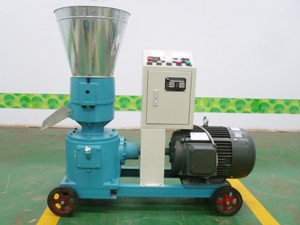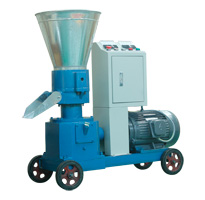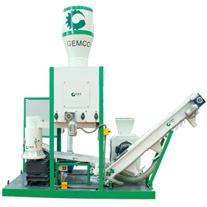

biomass pelleting machine introduction and advantages
Introduction
 Biomass pelleting machine is a machine used to create biomass from biodegradable materials and thus can be used for a variety of applications including making smoke, electricity or can be burned as fuel. The biomass pelleting machine can be used as a waste management tool and thus reduce an individual’s or organization’s carbon footprint. The biomass pelleting machine can be used on an industrial scale and takes saw dust, groundnut shells, cotton stalks, charcoal as well as garden waste and compresses them into pellets to be used as energy. The machines can either be installed as a single unit for the individual or as multiple units as a pellet making plant. With its wide variety of inputs, the biomass pellet making machine can help an organization, farm, or industry manage its waste by turning it into a product that can increase its energy reserves.
Biomass pelleting machine is a machine used to create biomass from biodegradable materials and thus can be used for a variety of applications including making smoke, electricity or can be burned as fuel. The biomass pelleting machine can be used as a waste management tool and thus reduce an individual’s or organization’s carbon footprint. The biomass pelleting machine can be used on an industrial scale and takes saw dust, groundnut shells, cotton stalks, charcoal as well as garden waste and compresses them into pellets to be used as energy. The machines can either be installed as a single unit for the individual or as multiple units as a pellet making plant. With its wide variety of inputs, the biomass pellet making machine can help an organization, farm, or industry manage its waste by turning it into a product that can increase its energy reserves.Applications
The biomass pelleting machines have a wide variety of applications and can be used as a universal way of managing waste and as a source of energy. Many industries have biodegradable matter that constantly goes to waste. The biomass pelleting machine can be applied in order to limit this waste and additionally limit the carbon footprint of the organization. The biomass pelleting machine can be used in a wide variety of sectors to create pellets to be used in creating energy and thus reduce the energy required to run it. Through its wide array of inputs in creating the biomass pellets, the machines can be employed virtually everywhere with assured success. The materials used to make the pellets are dried, then compressed and made into tiny bits that can then be fed into a burner to produce smoke, heat or steam to produce electricity. The materials can be made from corn stalks, wood, grass, saw dust and any other biomass materials. The biomass pelleting machines come powered either through motor power, diesel powered or gasoline. The biomass pelleting machine is easy to operate and utilizes advanced technology to provide high levels of productivity while at the same time limiting the consumption of power thus less wastage.
Advantages
The biomass pellet making machine offers a wide range of advantages both to the individual and to the organizations that employ it. The machine turns the biomass that would have been thrown out as waste into a source of cash to the organization. Additionally, the biomass pelleting machine helps to reduce the overall waste and can be turned into a source of energy. Thus, this energy is a virtually free resource that can help in reducing overall costs and the carbon footprint. Ultimately, the use of various materials in making the pellets means that the machines can be included in almost any field that produces biodegradable waste thus meaning that there will be less need for dumping spaces and reduce energy levels. Widespread adoption of this technology will go a long way in reducing carbon emissions and thus reduce the impact of global warming and dependence on the use of non-renewable energy sources.
Categories







